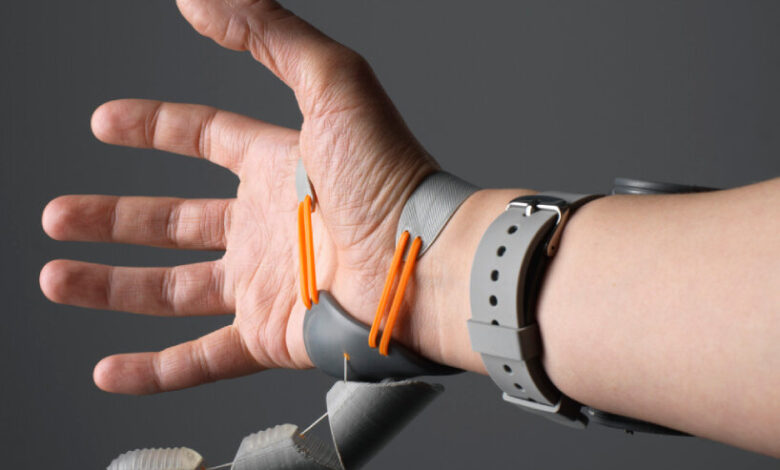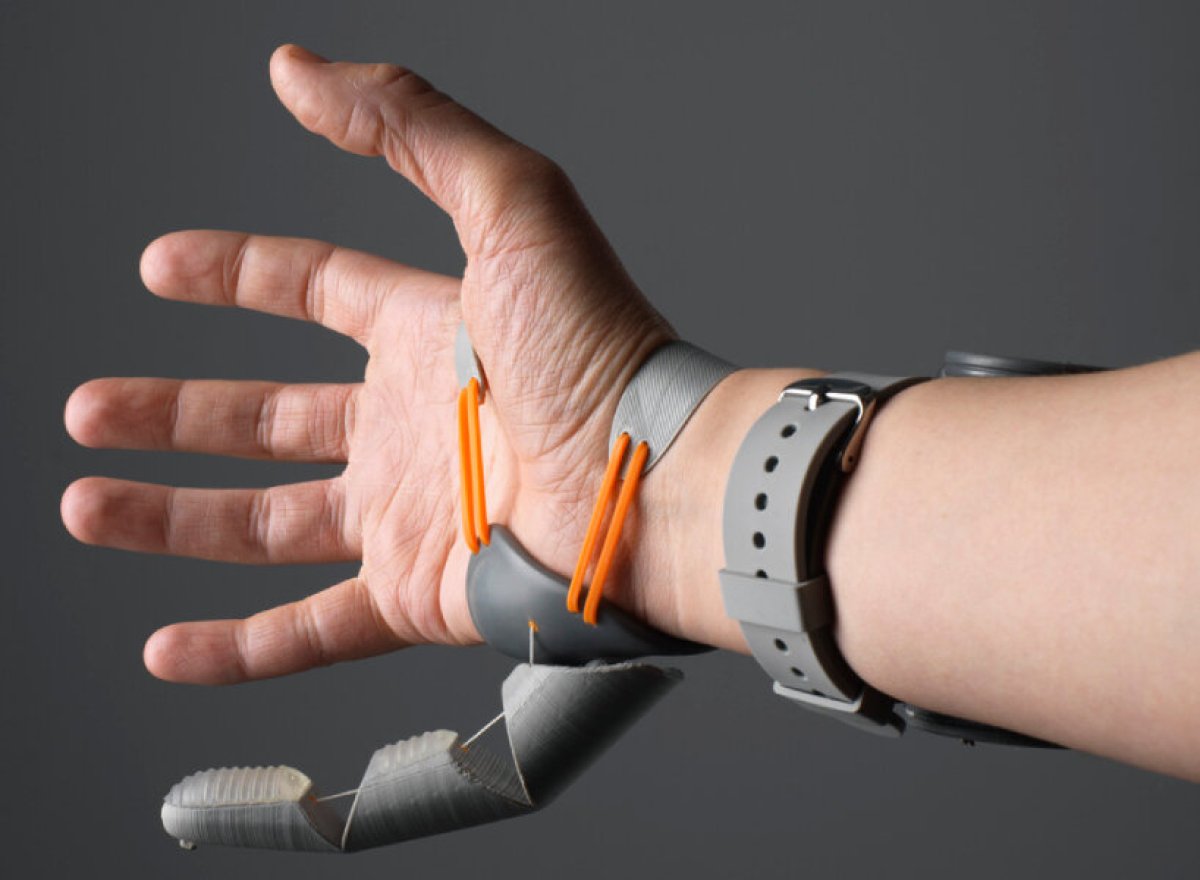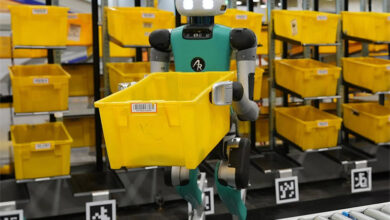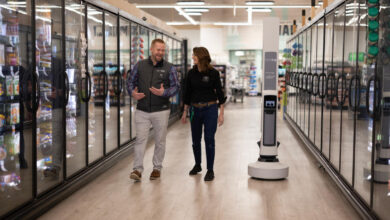Researchers Develop Robotic ‘Third Thumb’ for One-Handed Tasks

In a potentially groundbreaking advancement in prosthetics and body augmentation, scientists at the University of Cambridge have developed a robotic, 3D-printed “Third Thumb” that can be used to pick up and manipulate various objects, controlled by sensors under the toes.
Further, member of the public who tested the appendage quickly mastered its abilities and were able to extend their range of movements with almost immediate effect, according to a study published Thursday in the journal Science Robotics.
University of Cambridge/Plasticity Lab
The Third Thumb is worn on the opposite side of the hand from the biological thumb and is controlled by pressure sensors placed under each big toe. The design enables users to perform tasks that might be challenging or impossible with one hand, such as opening a bottle, peeling a banana or holding multiple glasses.
Researchers said the Third Thumb’s movement is directly proportional to the pressure applied, and releasing the pressure returns it to its original position. The study found that nearly all of the 596 participants, aged three to 96 and from various backgrounds, figured out how to effectively use the device within a minute.
“To ensure everyone can benefit from these exciting advances, we need to explicitly integrate and measure inclusivity during the earliest stages of research and development,” said Professor Tamar Makin from the Medical Research Council (MRC) Cognition and Brain Sciences Unit at the University of Cambridge.
“It’s equally important that these devices are accessible and functional for a wide range of users. Additionally, they should be easy for people to learn and use quickly,” said Dani Clode, a prosthetics and augmentation specialist at Cambridge’s Plasticity Lab and the lead designer of the Third Thumb.
Over five days, participants demonstrated the Third Thumb’s quick and effective integration by performing two tasks: picking up pegs and placing them in a basket, and manipulating various foam objects quickly.

University of Cambridge
Older and younger adults had similar abilities in using the prosthetic device though further investigation showed that older adults’ performance declined somewhat with age. The researchers attributed that finding to the general degradation in sensorimotor and cognitive abilities associated with aging, as well as a possible generational gap in technology familiarity.
In the trials, performance did not significantly vary between gender or left- or right-handed people, even though the thumb was always worn on the right hand.
Professor Makin and colleagues believe the Third Thumb could be particularly valuable for people who have lost an arm and struggle with everyday tasks. They emphasize the importance of developing tools that are both functional and easy to use.
“Technology is changing our very definition of what it means to be human,” they wrote in their research paper. “Machines are increasingly becoming a part of our everyday lives and even our minds and bodies.”
Uncommon Knowledge
Newsweek is committed to challenging conventional wisdom and finding connections in the search for common ground.
Newsweek is committed to challenging conventional wisdom and finding connections in the search for common ground.



